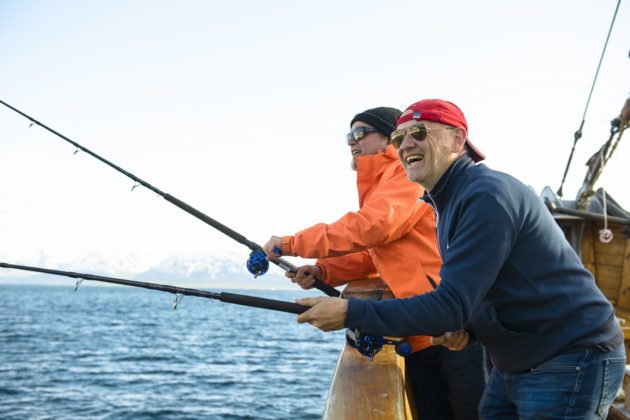Fishing tourism creates 410 jobs in Troms and Finnmark

A new report from Nofima shows that fishing tourism has created 410 jobs in Troms and Finnmark.
The report is based on information and accounting figures from 2019 and shows that there are a total of 164 businesses operating within fishing tourism. This provides the basis for value creation worth NOK 250 million.
Together with the analysis bureau Menon Economics, Nofima is now presenting the report “Ripple effects from aquaculture, fisheries and fishing tourism in Troms and Finnmark”.
The report shows that Senja, Tromsø, Harstad, Karlsøy and Lyngen are the most significant municipalities within fishing tourism. In Finnmark, Hasvik and Båtsfjord are in leading positions. Of the 164 businesses registered as fishing tourism businesses, 104 are limited liability companies. The other 60 are sole proprietorships.
Of the 410 jobs, 280 are employees of fishing tourism businesses, while 80s are employees of tourism companies that provide services to tourists. The remaining 50 constitute are indirect results at suppliers and subcontractors.
A total of 290,000 guest nights
Many of the tourists use overnight accommodation and stay for an average of seven nights. Troms sees 190,000 guest nights, while Finnmark sees 100,000 guest nights. The report shows that a fishing tourist will spend NOK 320 per day on other activities, such as restaurant visits, shopping and other experiences. This amount is less than the spend from other tourists, but this can be explained by the fact that the main activity is fishing and there is therefore less time for other activities. Accommodation and dining often take place at the fishing tourism facilities.
Fishing tourism is about offering travel experiences. The number of fish caught is not necessarily the decisive factor in the experience and a comprehensive service is therefore a crucial component. This means that value creation and employment appear relatively high when measured by resource use. Fishing tourism creates 200 FTEs for every 1,000 tonnes of fish caught. In comparison, there are six FTEs associated with every 1,000 tonnes of fish caught by professional fishermen.
German speakers dominate in Troms
The report also looks at where fishing tourists come from. German speakers dominate in Troms, but only account for 24 per cent in Finnmark. Fishing tourists in Finnmark are distributed more evenly across several nations. Here, there is a higher proportion of Norwegians, Nordic speakers and Eastern Europeans than there is in Troms, where 60 per cent of fishing tourists are German speakers. A total of 39,000 fishing tourists visit the counties in a year, with 25,000 visiting Troms and 14,000 visiting Finnmark.
It can be argued that resource consumption from unlawful tourist fishing should also be counted. In the survey conducted by Nofima, the scientists asked the tourism companies to provide an estimate of how large a proportion of resource consumption originates from unlawful activity. The average estimate was 12 per cent. The report has been funded by the Arctic Regional Research Fund. Nofima has collected accounting data from two thirds of the fishing tourism companies in the counties. The calculations for value creation and employment used here are accurate. The final third of the companies consists of sole proprietorships and the estimates here are associated with some uncertainty.

